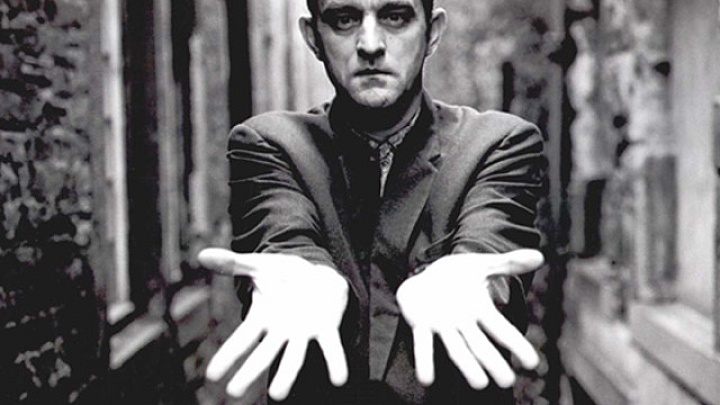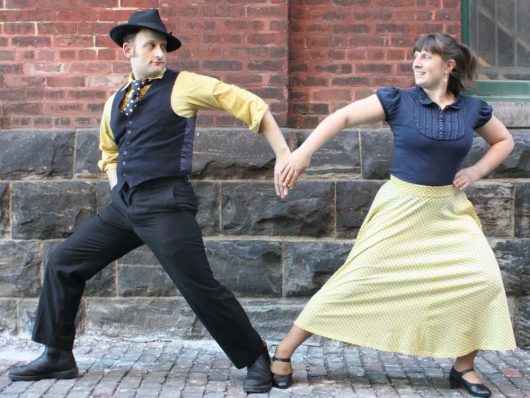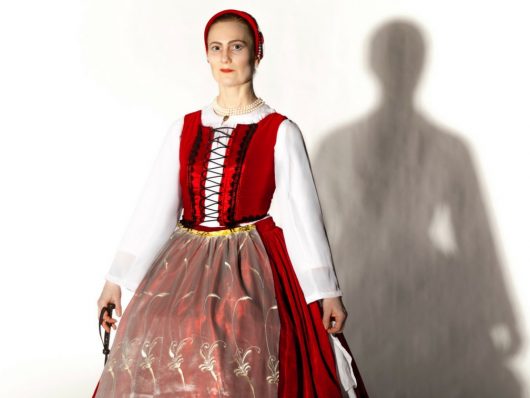3 HUNGARY Fringe plays
Posted on August 20, 2017 By Derek Owen Entertainment, Front Slider, Theatre
 The Inventor of All Things
The Inventor of All Things
By big word performance, UK, Venue 13, Old Strathcona Library
Jem Rolls returns to this year’s Fringe with his successful 2015 spoken word performance detailing the strangely forgotten life of pioneering nuclear physicist savant Leo Szilard, Hungary’s early 20th Century approximation of a much more interesting Sheldon Cooper. Thank God he brought it back, as Rolls is an absolutely engrossing storyteller.
Yes, Szilard’s tale is an outlandishly true story that involves numerous American presidents, along with Adolf Hitler, the real story behind a carpetbagging Robert Oppenheimer, and just about every physicist in existence from 1920-1945. Szilard apparently was the first dude to think of the atomic bomb and was instrumental in developing the science to actually make it work. We also learn that he was a scientist with a conscience, working behind the scenes in conjunction with Albert Einstein to prevent the Nazis from getting the knowledge to properly design the bomb. Szilard had developed the right way to make the bomb work, and he knew the Nazis hadn’t.
The 50-something Rolls is an impressive linguistic juggernaut, having the energy and wit of a coked-out Robin Williams circa 1980. By the end of the very intense hour, not only are we still spinning from his rapid fire delivery, but he’s soaked in sweat from having burned down the house telling the tale. The lights were hot, too. When it comes to spoken word storytelling as part of the Fringe theatre experience, Rolls is not just a consummate, witty wordsmith, he is a rock star. If you’ve got the attention span and interest, prepare to be entranced.
5 out of 5
 Szeretlek: A Hungarian Love Story
Szeretlek: A Hungarian Love Story
By The Grand Salto Theatre, Toronto, Venue 4, Academy at King Edward
Here’s a charming, engaging story of a post-WW2 love triangle in small town Hungary. Who’s going to win young Katalin’s heart? The earnest, bespectacled mama’s boy who speaks 13 different languages, or the self assured town doctor with a stable career and the ability to cure Katalin’s peculiar disease with some off-the-wall method that approaches modern day quackery?
As to the outcome of the story, the Toronto duo Franz and Zita Nyarady – on their sixth Fringe so far this summer – tip their dramatic hand very early in the match, but given their full use of just about every style available to them in physical theatre, they are still able to make this play a rousing and thoroughly engaging success.
It’s rare to see a play that breaks the fourth wall so often and so well. There are various scenes of Hungarian dance (they’ll even teach you one of them here); a quick primer on their language, apparently reliant on an endless succession of suffixes; and a brief but cute and skillfully rendered foray into 20th Century Hungarian history. Being a lighthearted piece, they left out the fact that as a country, Hungary entered the 20th Century like Charles Atlas and left it like the 97-pound weakling … but no matter. Every turn they take is seamlessly integrated into the threadbare plot. All the unexpected twists and turns make for a more interesting and entertaining play, and that’s what makes Szeretlek a winner.
4 out of 5
 Blood Countess
Blood Countess
By Prairie Fire, Regina, Venue 9, Telus Phone Museum
The year: 2517. The place: The 537th annual Edmonton Fringe Festival. The event: A play about a handsome 20th Century ladies’ man named Robert Pickton and the horribly cruel story of how he was falsely accused of murdering 600 young girls by a gang of nefarious, power hungry women bent on wresting control of his wildly successful alpaca farm.
Notice some inconsistencies in this version? Sure, but how are audiences of the future going to know what the truth is when no one’s around to share it with them?
Now bring yourself to consider the story behind the play Blood Countess, written and starring Regina’s Sharon Nowlan in a first person “retelling” of the events behind the Centuries-old story of a shockingly prolific serial killer and Hungarian noblewoman named Elizabeth Bathory. This woman was so evil she makes Hannibal Lecter look like Mr. Dressup. While most historical sources consider her recorded exploits as factual, for purposes of this play, a different interpretation – the technical term is “historical revisionism” – says that she was the victim of jealous, power hungry men wanting to ruin her to steal her money and very large estate.
It’s a convenient narrative considering present-day gender politics for sure, but consider its veracity. Since the actual historical perspective of the Countess is long gone, how do we know she wasn’t railroaded? This play asks some crucial questions about the very nature of truth in any historical account. Whose version is given credence, and why? Do they have any reason to bear false witness? Should we be putting words into mouths that no longer exist to speak for themselves?
Blood Countess weaves a very entertaining story that does fall a little short of excellent due to some confusing sections and the unwieldiness of playing multiple characters in a one person play. Still, it’s a Fringe hour well spent.
3 out of 5











